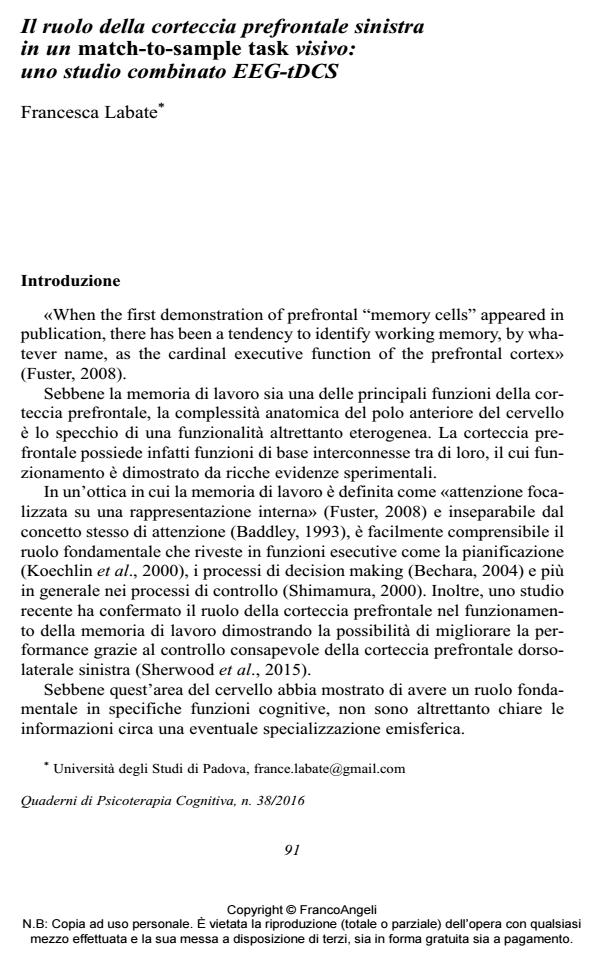The role of left prefrontal cortex in a visual match-to-sample task: a combined EEG-TDCS study
Journal title QUADERNI DI PSICOTERAPIA COGNITIVA
Author/s Francesca Labate
Publishing Year 2016 Issue 2016/38
Language Italian Pages 15 P. 91-105 File size 565 KB
DOI 10.3280/QPC2016-038007
DOI is like a bar code for intellectual property: to have more infomation
click here
Below, you can see the article first page
If you want to buy this article in PDF format, you can do it, following the instructions to buy download credits

FrancoAngeli is member of Publishers International Linking Association, Inc (PILA), a not-for-profit association which run the CrossRef service enabling links to and from online scholarly content.
Transcranial direct current stimulation (tDCS) is a non-invasive brain stimulation technique (NIBS) able to induce transient alteration of the cortical excitability. Recent surveys have stimulated the DLPFC using non-invasive brain stimulation techniques and have shown selective modulation of behaviours related to executive control and attention. Whilst behavioural effects of administering tDCS to the DLPFC have been demonstrated, to date not many studies have combined tDCS with any brain imaging techniques and the neural patterns underlying these behavioural changes have not yet been explored in detail. For this reason, this study seeks to address these shortcomings using electroencephalography (EEG), by combining tDCS of the DLPFC with recording of electrical brain activity. For this purpose it has been used a typical task administered to investigate working memory ability, the so-called delayed-match-to-sample task. Results seem to show that anodal stimulation over left DLPFC as compared to sham stimulation, improves RT performance on mismatch trials where S1 is different from S2. Moreover, this improvement of integration process between the two stimuli mediated by the visual working memory (Zhang et al., 2008) with anodal stimulation, is associated with a stronger magnitude of both mismatch triggered negativity and lateralized readiness potential components.
Keywords: Dorsolateral prefrontal cortex (DLPFC), match-to-sample task, ERPs, mismatch triggered negativity, lateralized readiness potential, tDCS.
Francesca Labate, Il ruolo della corteccia prefrontale sinistra in un match-to-sample task visivo: uno studio combinato EEG-tDCS in "QUADERNI DI PSICOTERAPIA COGNITIVA" 38/2016, pp 91-105, DOI: 10.3280/QPC2016-038007